The content of the article
Dracena is called the tree of happiness. The plant has a long trunk and a spreading crown, which resembles the top of a palm tree. The flowers are unpretentious, normally tolerate low temperatures, but do not like heat. To dracaena always remained green and fluffy, it must be watered, fed and regularly transplanted into a new pot. Experienced gardeners know how to move the plant to another flowerpot and not damage it, and they are happy to share secrets with lovers.
Right time
The flower brought from the store is kept for 4–5 days in a warm room, but it is protected from direct sunlight and is not watered. During this time, dracaena adapts to new conditions and grows stronger. The plant is transplanted for 6-7 days, so that it quickly takes root and does not get sick.
The root system of a young flower is constantly growing, so they annually buy a pot whose diameter is 5-7 cm larger than the old one. The transplant is carried out in March or April, when it gets warmer. In spring, dracaena awakens from winter sleep, and the circulation of juice through the stem and roots is accelerated. Thanks to this, the green pet takes root well, and its growth accelerates.
Old flowers, which are more than 3-4 years old, are transplanted less frequently. The plant is moved to a larger pot when its root system begins to crawl out from under the soil.
In autumn, dracaena prepares for wintering, accumulating nutrients. You can not disturb her, otherwise the crown will turn yellow, the leaves will fade and fall off. The rule does not apply to sprouts bought at a flower shop. Specialists use soil enriched with mineral additives and growth stimulants. If you leave a flower in such soil for longer than 2 weeks, it will fall ill and die.
Pot selection
Dracaena well takes root in containers that resemble plastic cups in shape. Oblong varieties with a wide top and a tapering bottom. What material to choose? Breathable that lets air through. Will fit:
- plastic;
- unglazed clay;
- ceramics.
Choose pots with drainage holes and a high sump in which you can pour water. In winter, it is very difficult to monitor the level of moisture in the soil, and so that fungus does not start due to excess fluid in the flowerpot, dracaena is watered not from above, but from below.
There are pots in which pallets are securely attached to the base. They are easier to transfer to another room, but you can buy classic options with removable stands.
Soil Recipe
Dracaena, although similar to a palm tree, is more fond of slightly acidic or neutral soil. Light soil is preferred, which allows air to pass through and does not trap moisture. In flower shops, it is advised to pay attention to the universal land intended for indoor plants. Owners of cottages and suburban areas can prepare the perfect foundation on their own.
The composition of the correct soil includes:
- turf land;
- river sand, coarse-grained;
- humus.
Bulk components are mixed in equal proportions. You can add peat, sheet soil or dolomite flour to the soil. To dracaena received a sufficient amount of nutrients, the base is enriched with fertilizers:
- potassium;
- double superphosphate;
- micronutrient fertilizers.
Do not use soil that contains clay. The additive retains water and leads to fungus. A heavy and dense base is combined with small pebbles or coconut fiber, which act as a baking powder and regulates the moisture level.
Land taken from the garden or garden must be disinfected. There are two ways: cold and hot.In the first case, the container with the workpiece is placed for 1-2 weeks in the freezer. In the second, the soil is steamed or calcined in the oven. High and very low temperatures kill weed spores, insect eggs and fungus. Disinfection is needed to protect the dracaena from diseases and parasites that can destroy the plant in a matter of days.
Sand is calcined or poured with a steep solution of manganese. Pebbles are thoroughly washed, poured with boiling water and dried. The treated soil is combined with peat and other additives. The components are well kneaded and insisted for 5-7 days. During this time, beneficial bacteria necessary for the growth of dracaena will appear in the soil.
Preparatory stage
The pot is filled with crushed clay shards, small expanded clay or grated foam. The material protects against accumulation of excess fluid and absorbs moisture from the pallet. The drainage layer occupies a tenth of the flowerpot.
On top of expanded clay or pebbles pour a nutrient base. You can lay a layer of coconut fiber to increase the breathability of the earth. The tank is filled with a quarter soil. The earth is slightly tamped.
They stop watering Dracaena 5-7 days before transplanting. The soil will have time to dry, and it will be easier to extract from the pot. The flower is removed away from direct sunlight so that it rests a little and grows stronger. Fertilize the plant is not necessary. Nutrient mixtures are introduced into the soil after transplantation. They accelerate the adaptation and growth of the root system.
Extraction and inspection
Dracaena is very fragile. It is easy to damage the flower if you pull it strongly or sharply on the stem, so it is carefully and slowly removed from the flowerpot.
The pot is turned over, knocked on the bottom with your fingers or a wooden stick. They grasp the dracaena stalk closer to the base and try to crank the container around the axis. If it lends itself easily, then the flowerpot is removed, and the flower, along with an earthen lump, is placed on a paper or fabric napkin.
Before planting in a new pot, you need to inspect the root system. They don’t clean the earth, but study samples that look out of the ground. If they are clean and healthy, then the plant is transferred to a prepared container.
A detailed inspection is necessary in cases where:
- the roots are weak and lethargic;
- there are blackened or dried samples;
- the leaves of the plant turned yellow or curled;
- small passages or insects were seen in the ground.
An earthen lump together with the root system is immersed in warm water or a weak solution of potassium permanganate. When it softens, the remains of the soil are carefully removed with your hands, being careful not to damage the shoots. The flower is placed on a cloth and wait until it dries. At this time, you need to prepare the inventory:
- rubber gloves;
- sharp scalpel, scissors or knife;
- crushed activated carbon;
- alcohol or salicylic acid;
- cotton wool.
The tool for trimming weak and diseased roots should be sharp. Dull scissors injure the plant. There are uneven and torn edges that heal longer.
The knife or scalpel blade is disinfected before the procedure and after each removed root, so as not to spread the infection and bacteria. Work in rubber gloves, otherwise microbes living on the skin and under the nails get into the slices. The wounds are sprinkled with crushed coal, which accelerates healing and protects against decay.
After trimming and processing with dry powder, the flower is placed for a day in a plastic tray and left in a warm room so that the slices dry. If you immediately plant it in the ground, it is likely that the injured roots will begin to rot.
New house
The clean and processed dracaena is transferred to the pot. Distribute the roots with your hands throughout the pot and straighten. The base is covered with earth, leaving bumpers 1.5–2 cm high. The lower and middle soil layer is rammed with a spatula or hand. Dracaena watered, wait until the soil has settled, then add a little more.The top layer remains loose, it does not need to be tamped.
You can put a piece of charcoal next to the root system. The material absorbs excess moisture, preventing siltation of the soil, and prevents mold.
Flower attacked by pests or fungus, need to replace the soil? If an emergency transplant is performed in winter or autumn, the root system is not cleaned from the ground. The soil is treated with a special pesticide and placed together with the flower in a new pot. Add soil and fertilizer to help the plant adapt.
Dracaena Care
After transplanting and watering, the plant is cleaned at partial shade. Direct sunlight is contraindicated. They dry the soil, weakening the dracaena. The room should be cool so that moisture does not evaporate from the ground too quickly. The temperature varies from +18 to + 20–23 degrees.
After 5–7 days after transplantation, Zircon solution is introduced into the soil: 5 drops of growth stimulator per 1 liter of liquid. The drug nourishes the weakened flower and strengthens the root system. If the air in the room is dry, it is necessary to spray the leaves of dracaena from the spray gun 1-2 times a day.
How to understand that dracaena has taken root? Closely monitor the plant. New green leaves are the first sign that the flower has grown. Now you can take the pot with dracaena to the balcony or the street, because oxygen accelerates the growth of the stem and root system.
The adapted flower is fed with mineral supplements. There is also a popular version of fertilizer, which is prepared from milk powder diluted with water. About 10 ml of water per 10 g of powder. The calcium contained in the preform feeds the flower. Thanks to milk powder, the crown of the mini palm becomes thicker, and the tips of the leaves do not turn yellow.
The topsoil is periodically loosened so that oxygen enters the root system. Flowers that are more than 8-10 years old do not transplant. They practically do not grow, therefore they do not need a larger pot. It is enough 1-2 times a year to replace the topsoil and make recharge.
Dracaena will decorate the apartment and office. The flower resembles a small palm tree, so it fits perfectly into the modern interior. Caring for a plant is easy, and replanting is even easier. You need to choose the right pot, soil and follow the recommendations of experienced gardeners.
Video: how to transplant a room dracaena correctly

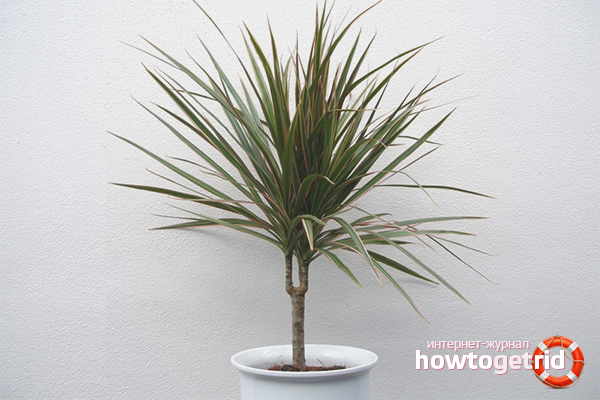
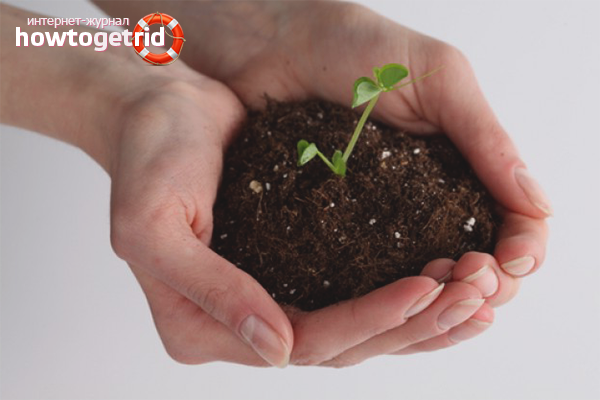

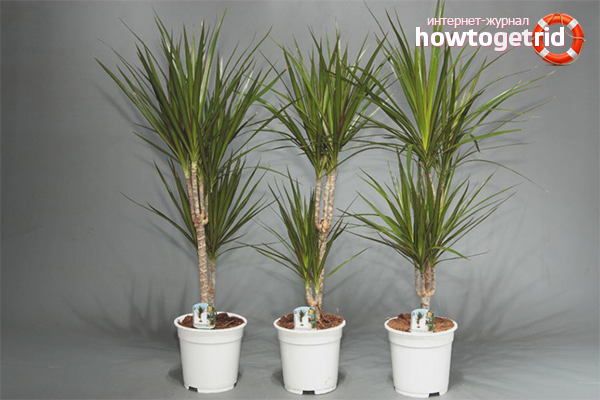


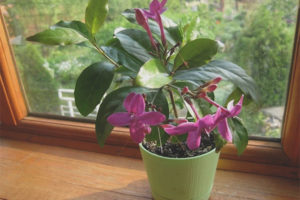



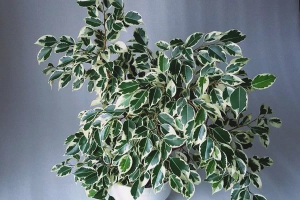

Submit